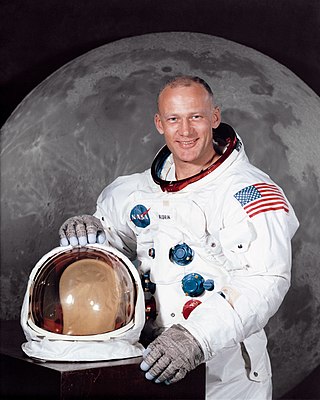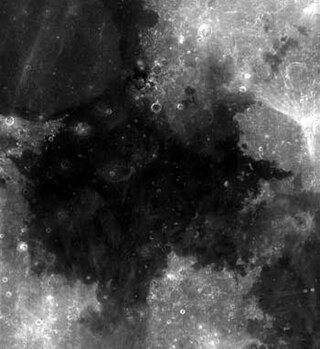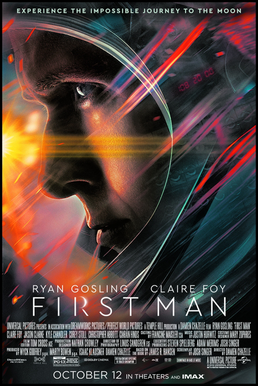


Tranquillity Park is a municipal park in Houston, Texas.



Tranquillity Park is a municipal park in Houston, Texas.
Tranquillity Park is a park located in Downtown Houston, Texas, between Walker and Rusk Streets, and west of Smith Street, with the United States federal courts building for the Southern District of Texas on one side and Houston City Hall on the other. It takes its name, notably differing in spelling, from the Sea of Tranquility, where man first landed on the Moon during the Apollo 11 mission on July 20, 1969. [1] First opening to visitors in the summer of 1979, Tranquillity Park was officially dedicated on the tenth anniversary of the historic lunar landing. On bronze plaques placed along the main entrance, the first words transmitted by Neil Armstrong from the Moon, "Houston, Tranquility Base here. The Eagle has landed," are written in 15 languages. [2] A replica of one of the footprints left on the Moon by Neil Armstrong is also on display inside the park.
A two-block-long oasis of water and walkways, the mounds and depressions throughout the park are meant to represent the cratered lunar surface, and the park's 32-level Wortham Fountain features towering stainless steel cylinders designed to resemble the Apollo's rocket boosters. Each year, Tranquillity Park hosts many city functions, art shows, and events such as the Children's Festival and the Houston International Festival. The park is also popular with downtown office workers seeking a shady spot to picnic during their lunch hour. [3] In the northern part of the park, actually a smaller park across the street, there are two memorials, one for each Space Shuttle disaster.
Construction of Tranquillity Park was completed in 1979, implementing the plan of Charles Tapley and Jeffrey Lunow of Charles Tapley Associates. [4]

Apollo 11 was the American spaceflight that first landed humans on the Moon. Commander Neil Armstrong and Lunar Module Pilot Buzz Aldrin landed the Apollo Lunar Module Eagle on July 20, 1969, at 20:17 UTC, and Armstrong became the first person to step onto the Moon's surface six hours and 39 minutes later, on July 21 at 02:56 UTC. Aldrin joined him 19 minutes later, and they spent about two and a quarter hours together exploring the site they had named Tranquility Base upon landing. Armstrong and Aldrin collected 47.5 pounds (21.5 kg) of lunar material to bring back to Earth as pilot Michael Collins flew the Command Module Columbia in lunar orbit, and were on the Moon's surface for 21 hours, 36 minutes before lifting off to rejoin Columbia.

The Apollo program, also known as Project Apollo, was the United States human spaceflight program carried out by the National Aeronautics and Space Administration (NASA), which succeeded in preparing and landing the first men on the Moon from 1968 to 1972. It was first conceived in 1960 during President Dwight D. Eisenhower's administration as a three-person spacecraft to follow the one-person Project Mercury, which put the first Americans in space. Apollo was later dedicated to President John F. Kennedy's national goal for the 1960s of "landing a man on the Moon and returning him safely to the Earth" in an address to Congress on May 25, 1961. It was the third US human spaceflight program to fly, preceded by the two-person Project Gemini conceived in 1961 to extend spaceflight capability in support of Apollo.

Apollo 12 was the sixth crewed flight in the United States Apollo program and the second to land on the Moon. It was launched on November 14, 1969, by NASA from the Kennedy Space Center, Florida. Commander Charles "Pete" Conrad and Lunar Module Pilot Alan L. Bean performed just over one day and seven hours of lunar surface activity while Command Module Pilot Richard F. Gordon remained in lunar orbit.

Neil Alden Armstrong was an American astronaut and aeronautical engineer who in 1969 became the first person to walk on the Moon. He was also a naval aviator, test pilot, and university professor.

Buzz Aldrin is an American former astronaut, engineer and fighter pilot. He made three spacewalks as pilot of the 1966 Gemini 12 mission. He was the Lunar Module Eagle pilot on the 1969 Apollo 11 mission and became the second person to walk on the Moon after mission commander Neil Armstrong.

Mare Tranquillitatis is a lunar mare that sits within the Tranquillitatis basin on the Moon. It is the first location on another celestial body to be visited by humans.

Tranquility Base is the site on the Moon where, in July 1969, humans landed and walked on a celestial body other than Earth for the first time. On July 20, 1969, Apollo 11 crewmembers Neil Armstrong and Buzz Aldrin landed their Apollo Lunar Module Eagle at approximately 20:17:40 UTC. Armstrong exited the spacecraft six hours and 39 minutes after touchdown, followed 19 minutes later by Aldrin. The astronauts spent two hours and 31 minutes examining and photographing the lunar surface, setting up several scientific experiment packages, and collecting 47.5 pounds (21.5 kg) of dirt and rock samples for return to Earth. They lifted off the surface on July 21 at 17:54 UTC.
"The Series Has Landed", also known as "Episode Two: The Series Has Landed", is the second episode in the first season of the American animated television series Futurama. It originally aired on the Fox network in the United States on April 4, 1999. The episode was written by Ken Keeler and directed by Peter Avanzino. In this episode, several main characters, including Doctor Zoidberg, Amy Wong and Hermes Conrad, are first introduced, and the crew goes on their first mission. After completing their delivery, a series of mishaps occurs which puts Fry and Leela's lives in danger and nearly leaves all of them trapped on the Moon.

For All Mankind is a 1989 documentary film made of original footage from NASA's Apollo program, which successfully prepared and landed the first humans on the Moon from 1968 to 1972. It was directed by Al Reinert, with music by Brian Eno. The film, consisting of footage from Apollo 7 through Apollo 17, was assembled to depict what seems like a single trip to the Moon, highlighting the beauty and otherworldliness of the images by only using audio from the interviews Reinert conducted with Apollo crew members.

Apollo 11 was the first human spaceflight to land on the Moon. The 1969 mission's wide effect on popular culture has resulted in numerous portrayals of Apollo 11 and its crew, Neil Armstrong, Buzz Aldrin, and Michael Collins.
Tranquility or tranquillity is state of being calm, serene, and worry-free.

Third-party evidence for Apollo Moon landings is evidence, or analysis of evidence, about the Moon landings that does not come from either NASA or the U.S. government, or the Apollo Moon landing hoax theorists. This evidence provides independent confirmation of NASA's account of the six Apollo program Moon missions flown between 1969 and 1972.

There are many nicknames for the city of Houston, the largest city in Texas and fourth-largest city in the United States. The city's nicknames reflect its geography, economy, multicultural population, and popular culture, including sports and music. They are often used by the media and in popular culture to reference the city.

The Apollo 11 goodwill messages are statements from leaders of 73 countries around the world on a disc about the size of a 50-cent piece made of silicon that was left on the Moon in 1969 by the Apollo 11 astronauts.

The Modular Equipment Transporter (MET) was a two-wheeled, hand-pulled vehicle that was used as an equipment hauling device on traverses across the lunar surface. Designed after Apollo 12 astronauts Pete Conrad and Alan Bean had difficulties lugging their equipment significant distances to and from their Lunar Module, the MET primarily functioned as a portable workbench with a place for hand tools and their carrier, cameras, spare camera magazines, rock sample bags, environmental sample containers, and the portable magnetometer with its sensor and tripod. It was carried on the 1971 Apollo 14 mission and was planned to be used on Apollo 15, but was used only on Apollo 14 since Apollo 15's mission was changed to be the first to employ the motorized Lunar Roving Vehicle, which transported both astronauts and equipment.

First Man is a 2018 American biographical drama film directed by Damien Chazelle from a screenplay by Josh Singer, based on the 2005 book of the same name by James R. Hansen. The film stars Ryan Gosling as Neil Armstrong, alongside Claire Foy, Jason Clarke, Kyle Chandler, Corey Stoll, Christopher Abbott, and Ciarán Hinds, and follows the years leading up to the Apollo 11 mission to the Moon in 1969.

West crater is a small crater in Mare Tranquillitatis on the Moon, east of the Apollo 11 landing site, which is known as Tranquility Base. The name of the crater was formally adopted by the IAU in 1973.

Little West is a small crater in Mare Tranquillitatis on the Moon, east of the Apollo 11 landing site known as Tranquility Base.
Double is a small crater in Mare Tranquillitatis on the Moon, west of the Apollo 11 landing site known as Tranquility Base.

Lunar Module Eagle (LM-5) is the spacecraft that served as the crewed lunar lander of Apollo 11, which was the first mission to land humans on the Moon. It was named after the bald eagle, which was featured prominently on the mission insignia. It flew from Earth to lunar orbit on the command module Columbia, and then was flown to the Moon on July 20, 1969, by astronaut Neil Armstrong with navigational assistance from Buzz Aldrin. Eagle's landing created Tranquility Base, named by Armstrong and Aldrin and first announced upon the module's touchdown.
29°45′39″N95°22′06″W / 29.7607°N 95.3683°W
https://www.visithoustontexas.com/listings/tranquility-park/20278/